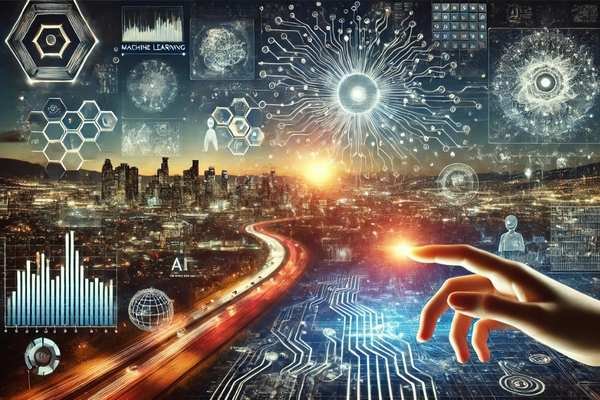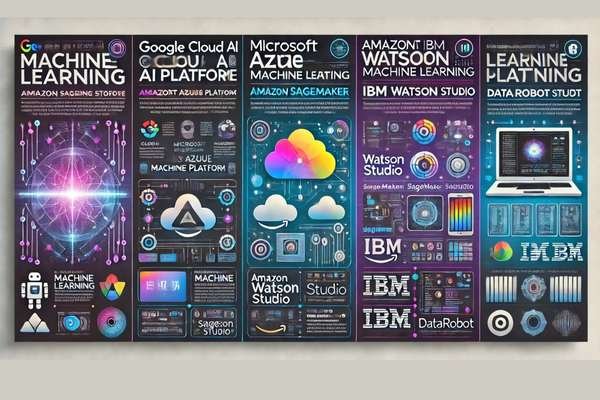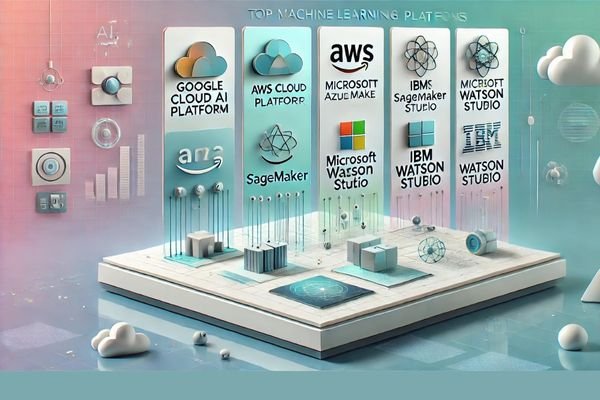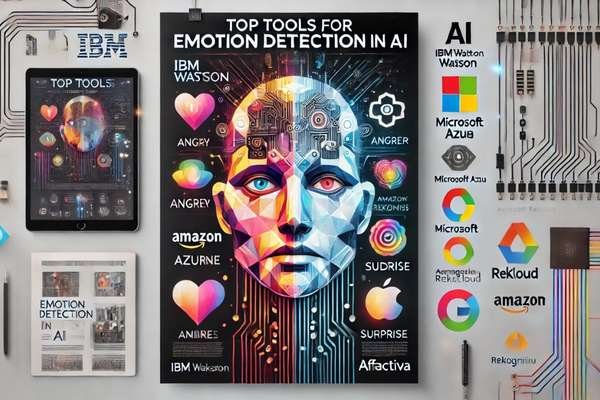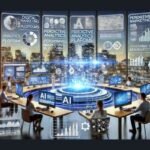
The Future of Machine Learning Platforms : Trends and Predictions
September 25, 2024
How to Choose the Best Desktop for Machine Learning Projects
September 25, 2024Understanding Machine Learning : What It Is and How It Powers Modern Technology
Machine learning (ML) has become a cornerstone of modern technology, transforming industries and reshaping how businesses operate. This powerful tool is revolutionizing how companies engage customers, manage data, and create efficiencies. But what exactly is machine learning, and how does it drive the innovations we see today?
Table of Contents
1. What is Machine Learning?
Within artificial intelligence (AI), machine learning is a subset wherein computers may learn from data and make judgments without explicit programming. Machine learning models utilize algorithms to examine data and provide predictions depending on trends instead of adhering to a set of hard-coded guidelines.
Fundamentally, machine learning is about discovering links in data and applying those relationships to generate accurate forecasts or classifications. A machine learning model may learn and grow over time better the more data it possesses.
2. How Does Machine Learning Work?
Machine learning operates through several key stages: data collection, data preprocessing, model building, model training, and prediction.
2.1. Data Collection
The first step in any machine learning project is collecting relevant data. This data could be anything from customer transaction histories, images, text, or even sensor readings from IoT devices. The data’s quality and quantity significantly influence the accuracy and reliability of the machine learning model.
2.2. Data Preprocessing
Once data is collected, it must be cleaned and prepared for analysis. Data preprocessing involves removing irrelevant information, handling missing values, and normalizing data. This step is crucial because even the most advanced algorithms can fail if the input data is of poor quality.
2.3. Building the Model
The next step is choosing the appropriate machine learning algorithm to analyze the data. Some popular algorithms include decision trees, support vector machines (SVM), and neural networks. The choice of the model depends on the type of data and the problem being solved.
2.4. Model Training
Once the model is built, it needs to be trained on the dataset. Training involves feeding the model with input data so it can learn to predict outcomes. During training, the model adjusts its internal parameters to minimize the difference between its predictions and the actual results.
2.5. Prediction
After training, the model is used to make predictions on new, unseen data. These predictions are then evaluated for accuracy, and adjustments can be made to improve performance.
3. Types of Machine Learning
There are three main types of machine learning: supervised learning, unsupervised learning, and reinforcement learning.
3.1. Supervised Learning
Supervised learning is the most common type of machine learning. In this approach, the model is trained on labeled data, where the outcome is already known. For example, in a spam detection model, emails would be labeled as “spam” or “not spam.” The model learns to classify new emails based on this labeled training data.
- Examples: Email filtering, fraud detection, and image recognition.
3.2. Unsupervised Learning
Unsupervised learning involves training a model on data without labeled outcomes. The model must find patterns and relationships in the data without predefined categories. It’s commonly used for clustering and association tasks.
- Examples: Market segmentation, customer profiling, and recommendation engines.
3.3. Reinforcement Learning
In reinforcement learning, an agent learns by interacting with its environment and receiving feedback in the form of rewards or penalties. The goal is to maximize cumulative rewards over time.
- Examples: Game playing (like chess or Go), autonomous driving, and robotic process automation.
4. Applications of Machine Learning in Modern Technology
Machine learning powers a wide array of modern technological advancements, many of which you interact with daily. Let’s explore some key applications:
4.1. Personalized Marketing
Machine learning enables highly targeted marketing strategies by analyzing consumer behavior, preferences, and interactions. Companies like Amazon and Netflix use machine learning to recommend products or content tailored to individual users, boosting customer engagement and satisfaction.
- Affiliate Tip: Consider promoting marketing automation tools like HubSpot or ActiveCampaign, which leverage machine learning to create personalized campaigns.
4.2. Natural Language Processing (NLP)
NLP is a subset of machine learning that enables computers to understand and interpret human language. It powers chatbots, virtual assistants (like Siri or Alexa), and sentiment analysis tools. Marketers and developers can use NLP to improve customer service, streamline communication, and analyze feedback at scale.
- Affiliate Tip: Tools like Grammarly or Jarvis.ai are great examples of NLP in action, offering writing assistance and content generation.
4.3. Image and Video Recognition
Machine learning models trained on large datasets of images can recognize objects, faces, and even emotions. This technology is used in security systems, self-driving cars, and social media platforms for tagging photos.
- Affiliate Tip: Promote image recognition platforms or software, like Cloudinary or Adobe Sensei, that assist marketers in automating visual content management.
4.4. Fraud Detection and Cybersecurity
Machine learning models excel at identifying anomalies in data, making them ideal for fraud detection and cybersecurity. Banks, payment processors, and online platforms use machine learning to detect fraudulent activities, saving millions of dollars annually.
- Affiliate Tip: Products like Norton or McAfee leverage machine learning to offer advanced protection against cyber threats.
5. The Future of Machine Learning
5.1. Autonomous Systems
Self-driving cars, drones, and delivery robots all rely on machine learning to navigate complex environments and make real-time decisions. As machine learning models become more advanced, we will see more autonomous systems integrated into our daily lives.
5.2. AI-Driven Healthcare
In healthcare, machine learning is revolutionizing diagnostics, personalized medicine, and drug discovery. Algorithms can analyze patient data to predict diseases, recommend treatments, and even assist in surgeries.
5.3. The Rise of Explainable AI (XAI)
One of the major challenges in machine learning is the “black box” problem, where the decision-making process of a model is not transparent. Explainable AI (XAI) seeks to solve this by providing clearer insights into how models arrive at their predictions, making AI systems more trustworthy.
Understanding Machine Learning : What It Is and How It Powers Modern Technology Recap
Overview of Machine Learning
| Aspect | Description | Examples |
|---|---|---|
| Definition | Machine learning enables computers to learn from data and make predictions without explicit programming. | Predicting stock prices, recommendation engines. |
| Types | Supervised, unsupervised, and reinforcement learning. | Supervised: Spam filtering; Unsupervised: Market segmentation; Reinforcement: Game AI. |
| Applications | Used in marketing, cybersecurity, healthcare, and autonomous systems. | Personalized ads, fraud detection, disease diagnosis. |
| Future Trends | Explainable AI, autonomous systems, AI-driven healthcare. | Self-driving cars, diagnostic AI tools. |
Frequently Asked Questions (FAQs)
What is the difference between machine learning and AI?
Machine learning is a subset of AI. While AI encompasses any system that mimics human intelligence, machine learning specifically refers to systems that learn from data without being explicitly programmed.
Can machine learning models make mistakes?
Yes, machine learning models can make mistakes, especially if they are trained on biased or incomplete data. Regular updates and monitoring are essential to ensure model accuracy.
How is machine learning used in marketing?
Machine learning helps marketers personalize campaigns, predict customer behavior, and optimize pricing strategies. Tools like recommendation engines and predictive analytics are common examples of machine learning in marketing.
Conclusion
Machine learning is at the heart of modern technology, driving advancements in marketing, cybersecurity, healthcare, and more. By understanding how machine learning works and its practical applications, businesses and professionals can harness its power to gain a competitive edge. Whether you’re a developer building the next AI tool or a marketer optimizing campaigns, machine learning is a critical skill to master in today’s digital landscape.
Incorporating machine learning tools into your workflow can streamline processes and increase efficiency. Consider exploring machine learning-powered platforms like ActiveCampaign for personalized marketing, Jarvis.ai for content creation, or Cloudinary for image management to stay ahead in this fast-evolving tech space.





